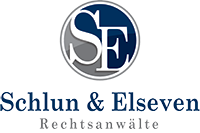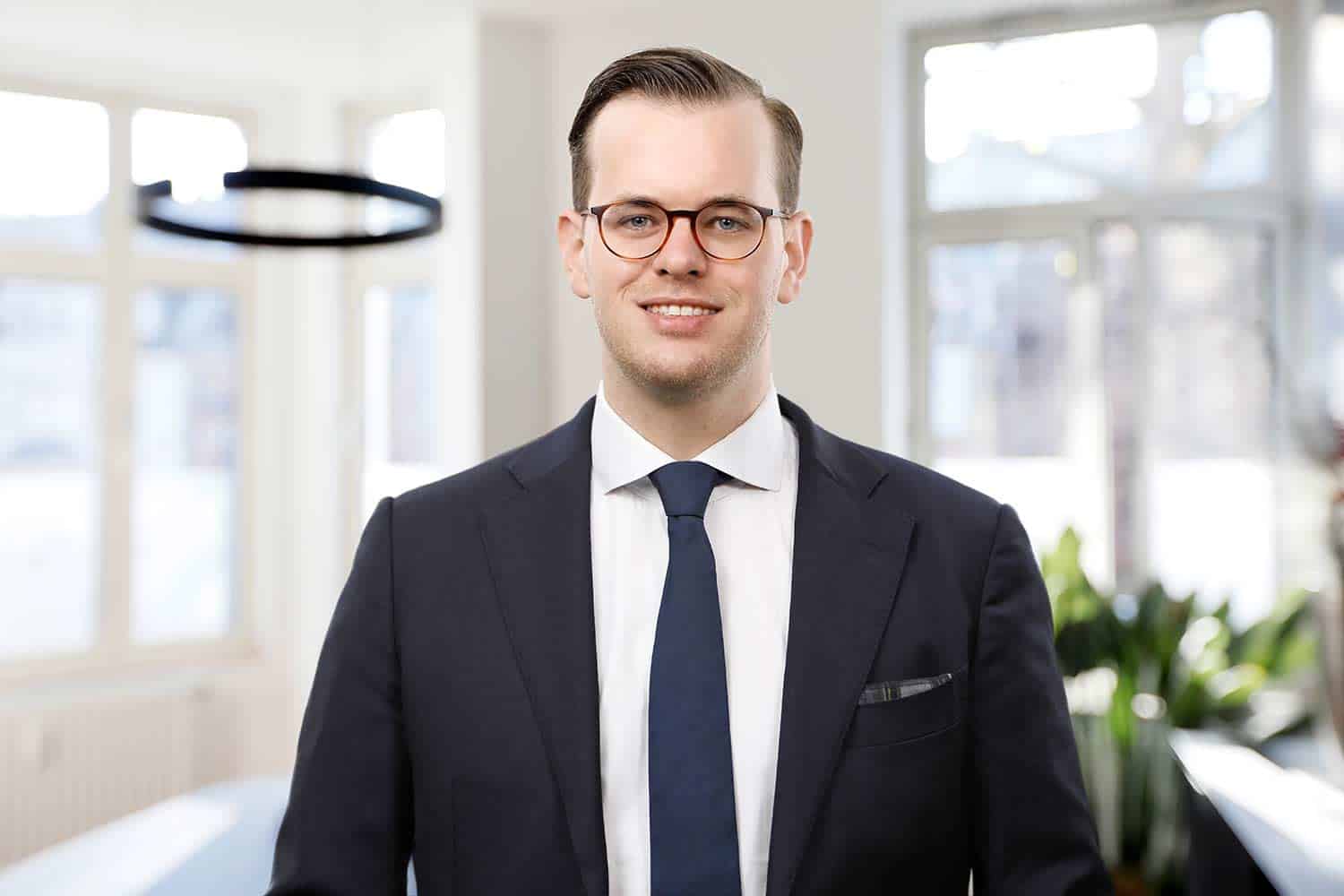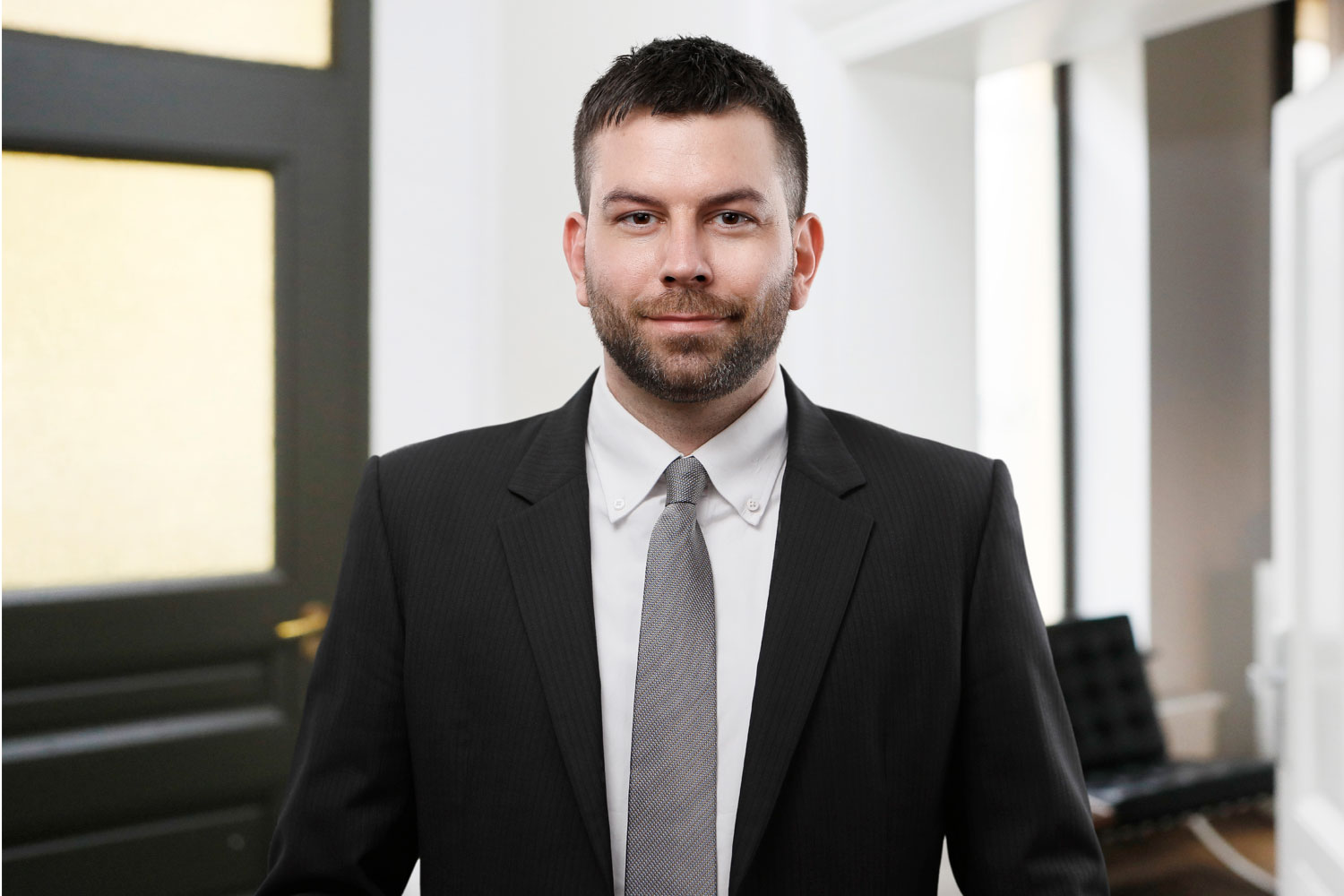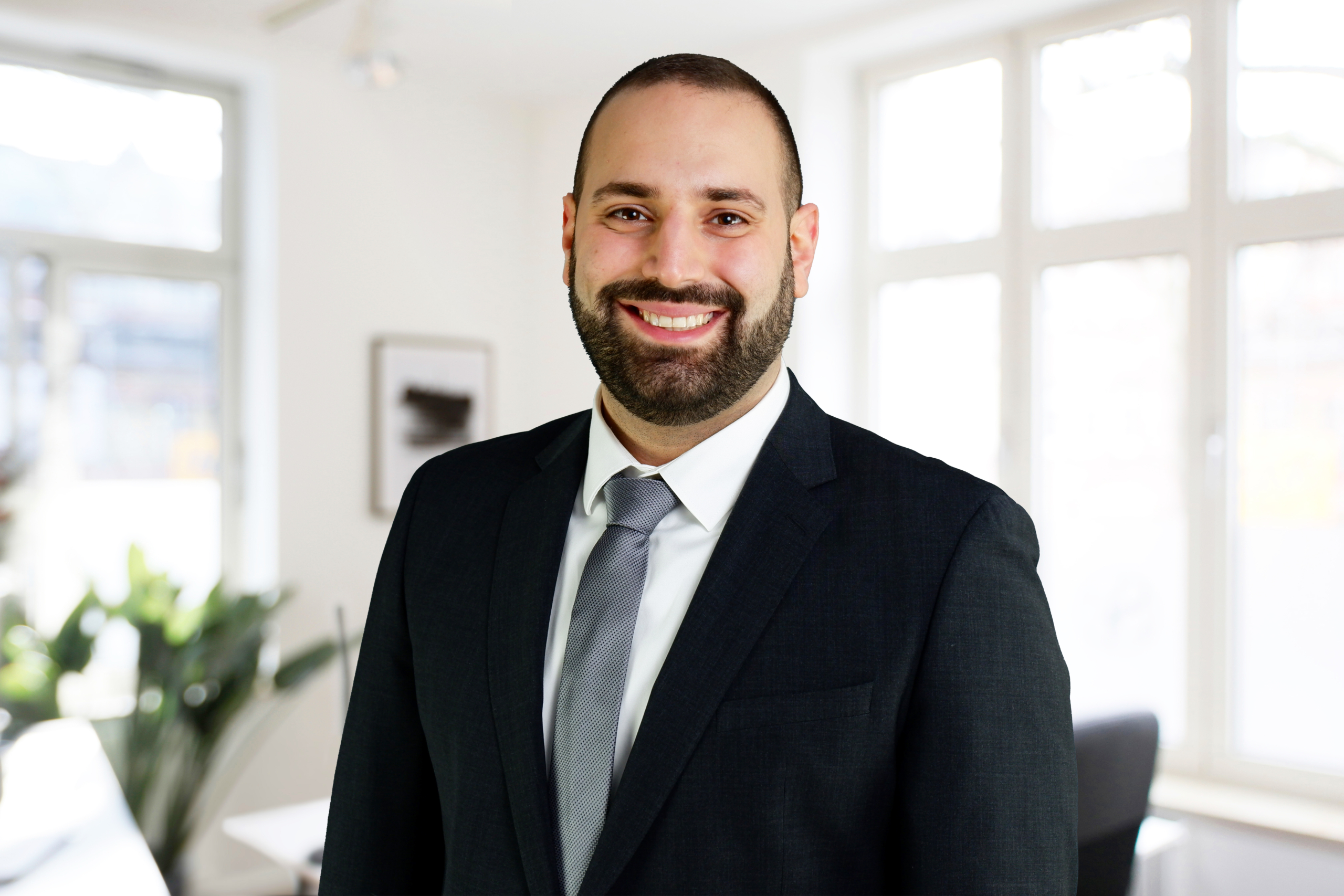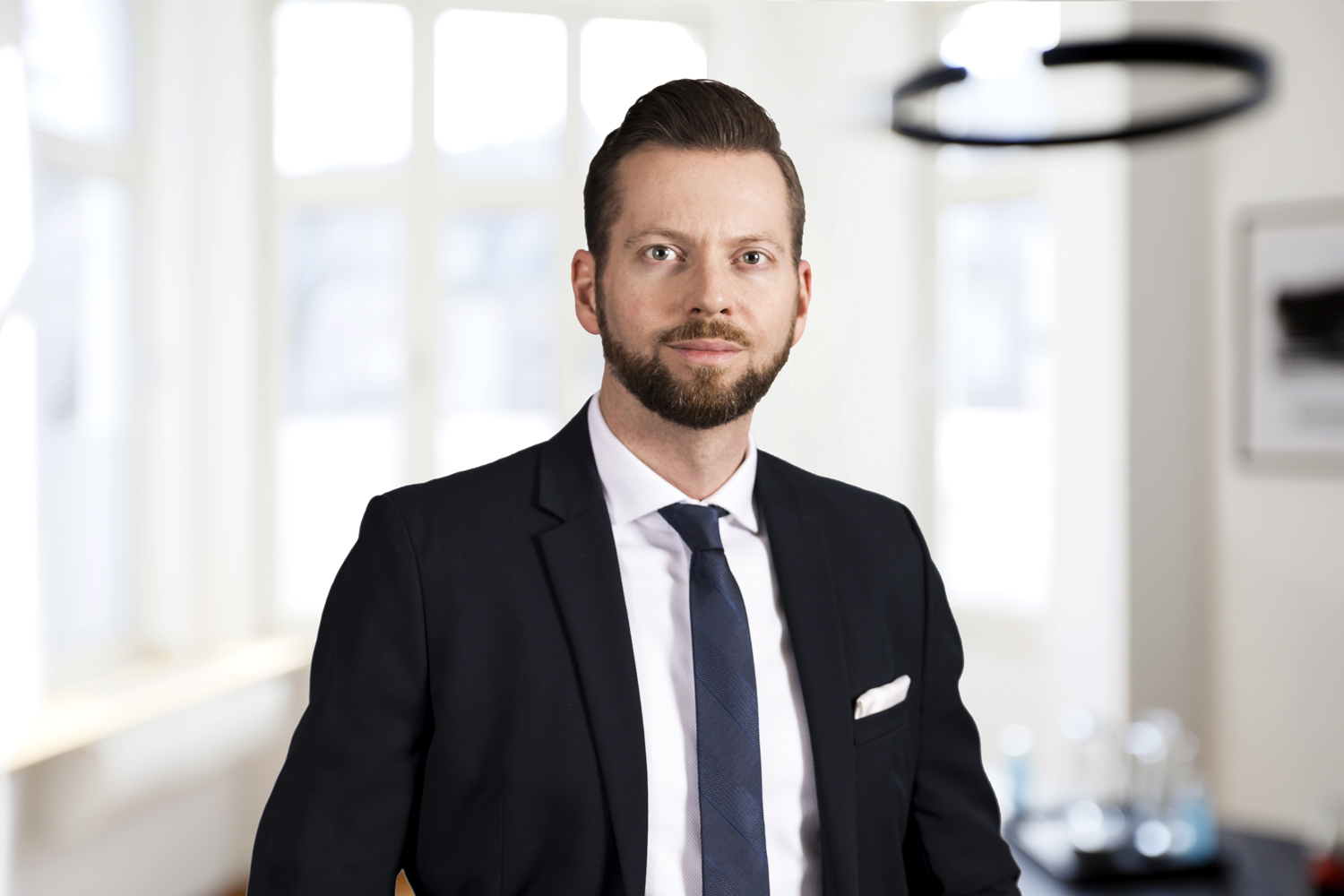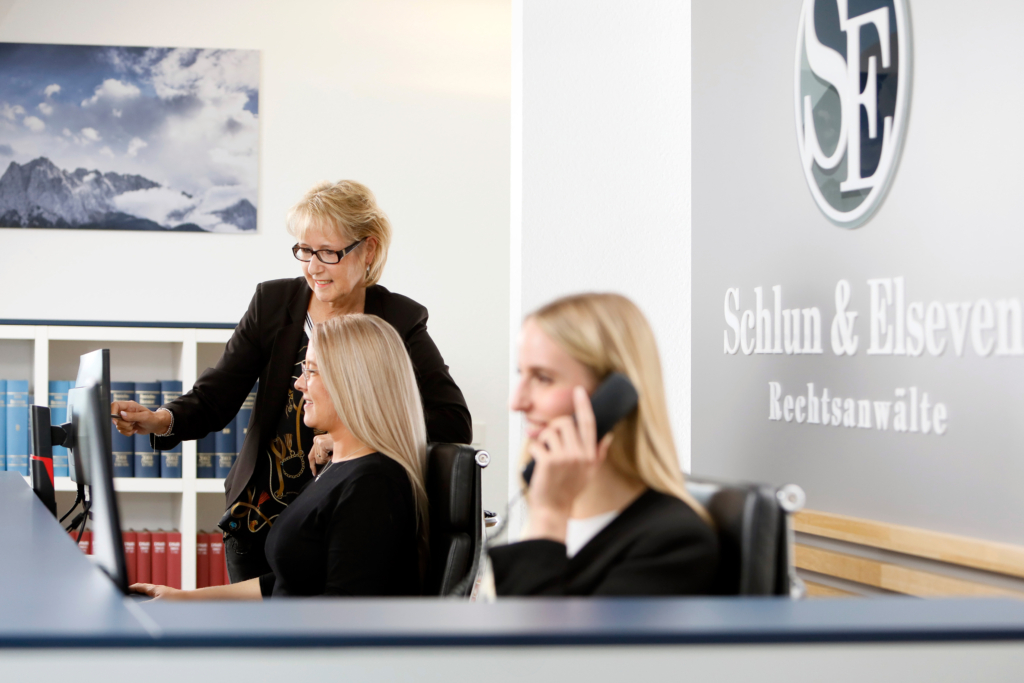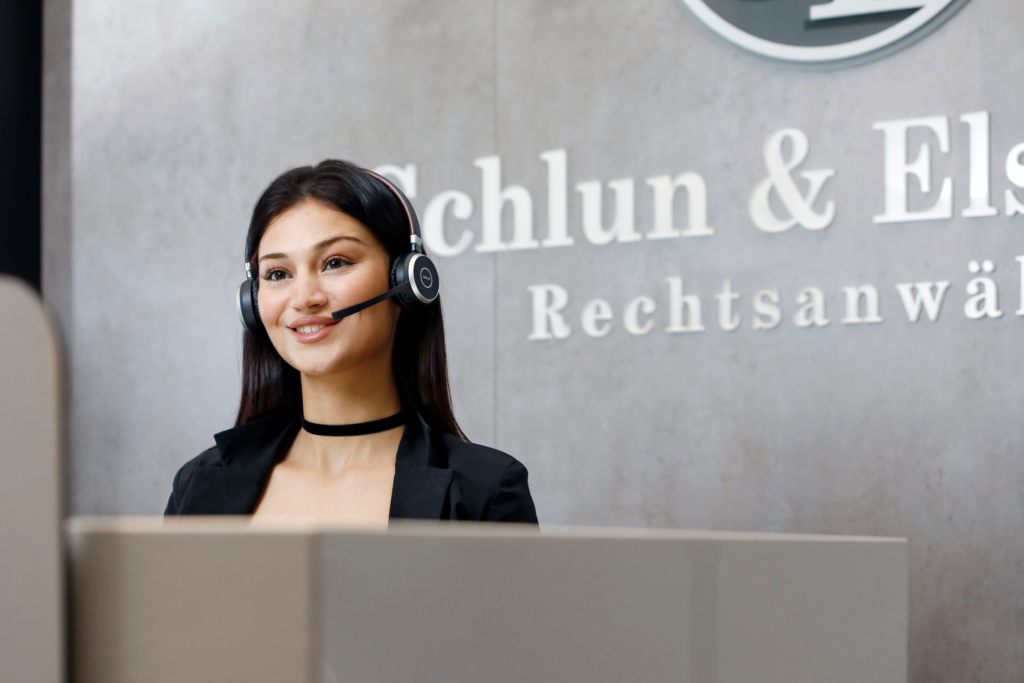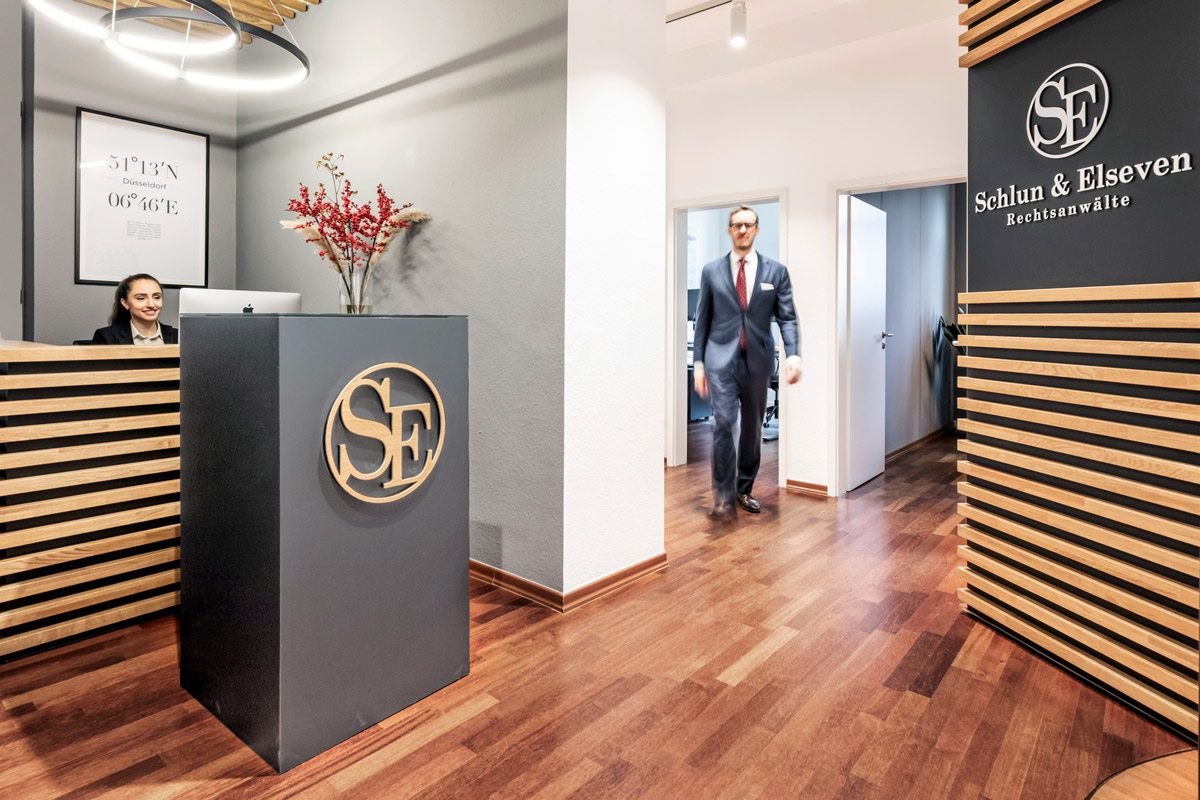In Germany, innovative ideas and technical developments can be protected against unauthorised use through a patent or utility model application. In this context, a patent – in addition to investment protection – represents the recognition of your creative achievement. Both on a legal and technical level, German patent law matters can be very complex, making it difficult for non-lawyers to identify the need for protection and to take the appropriate legal steps. The German Patent and Trademark Office (DPMA) advises to consult a lawyer whenever patent matters are involved. Consulting a lawyer in such a case is mandatory for legal reasons if you live outside Germany.
To provide our clients with the support they need, the German law firm Schlun & Elseven Rechtsanwälte offers competent and committed legal assistance. Regardless of whether you are applying for a patent, extending the term of protection, licensing or selling or otherwise transferring your rights – our German patent lawyers ensure that all formal requirements are met so that your rights and interests are always protected in the best possible way.
Requirements for the Grant of a Patent
In principle, a patent can be granted “for inventions in all fields of technology, provided that they are new, involve an inventive step and are susceptible of industrial application” (Section 1 of the German Patent Act, PatG). This provision is also valid at the European level, Art. 52 EPC (European Patent Convention).
An invention is considered new if it belongs to something other than the current state of the art. Furthermore, this invention must be based on an inventive step. This means that your invention must not be obvious from the prior art, and the novelty must be minor. Industrial applicability is given if the invention can be produced or used in any industrial field. Unrealistic ideas may not be patented.
According to Section 1 (3) PatG, inventions that cannot be patented include, in addition to unrealisable ideas, discoveries, scientific theories, mathematical methods, aesthetic creations, the reproduction of information, as well as plans, rules and methods for mental activities, for games or business activities, and programs for data processing equipment. However, this list is non-exhaustive, so you are not automatically entitled to a patent because your invention does not fall into one of these categories. Instead, a detailed examination must be carried out as early as patentability. Section 2 PatG also contains a list of inventions that are not patentable. The categories listed have in common that they are contrary to public policy or morality.
Alternative to the Patent: Utility Model
The patent and the utility model are forms of industrial property protection for technical inventions. However, they differ in essential points, so it makes sense for some to apply for a patent in a classical way, but for others, it makes more sense to register a utility model.
Utility model protection was intended for everyday inventions, but over time, it gained importance and represents a natural alternative to patent protection. It is also possible to apply for both forms of protection side by side so that a utility model is registered first until the patent examination is completed and a patent can be registered. Patent and utility models are only mutually exclusive in a few specially regulated cases, so the scope of protection is not identical.
The essential differences between a patent and its “little brother”, the utility model, are,
- The utility model is a pure registration right, whereas a detailed examination is carried out for the registration of a patent,
- The term of patent protection is 20 years, and that of a utility model is a maximum of 10 years.
Accordingly, the path to a utility model is more straightforward and faster, so the corresponding invention is protected much sooner than with a patent. In contrast, the patent has long-term advantages. It should be noted that although patent protection with the same content exists at the European level, there is no comparable EU protection regulation for utility models.
Application for a Patent or Utility Model
Registration applications are filed at the DPMA. According to Section 34 (3) PatG, the application must contain:
- the name of the applicant;
- a request for the grant of the patent, describing the invention briefly and precisely;
- one or more claims specifying what is to be protected as patentable;
- a description of the invention;
- the drawings to which the claims or the description refer.
To make the description available to the public, a summary of its technical description must also accompany the application for registration or be subsequently filed within 15 months from the filing date.
This is an application process since the utility model is a registration right. Only some external requirements are examined, and the utility model is granted if they are met. In patent grant proceedings, the substantive aspects are also examined. A resulting difference is the handling of objections to the granted rights. A utility model is attacked and defended with different legal remedies than a patent.
The desired result of the application is the grant decision, the requirements for which are laid down in Section 49 PatG. The publication of the patent grant has been on the internet since 2004.
Legal Remedies for Patents and Utility Models
If the desired result, namely the comprehensive grant decision, has not been obtained, an appeal may be considered. However, it may also be necessary to file an appeal in other constellations, for example, to proceed against the grant of a patent by a third party (opposition). Of course, legal actions are also available in patent law matters, with infringement actions being the most common. An infringement action can be used to assert any claims arising from infringements of your patent. These include claims for injunctive relief and damages, claims for destruction and claims for information.
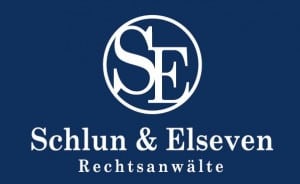
Practice Group: German Intellectual Property Law
Practice Group:
German Intellectual Property Law
Contact our Lawyers for German Intellectual Property Law
Please use our online form to outline your request to us. After receiving your request, we will make a brief initial assessment based on the facts described and provide you with a cost offer. You can then decide whether you would like to engage our services.
